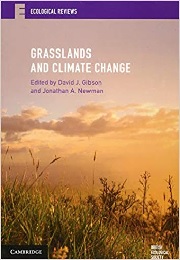Grasslands and Climate Change

Edited by David J Gibson and Jonathan A Newman
Cambridge University Press, £69.99 (Hardback)
Grasslands and Climate Change explores the ways in which a warmer climate and changing precipitation patterns may impact grassland ecosystems.
Climate change threatens the many ecosystem services provided by grasslands, including soil carbon storage, aquifer recharge and biofuel production. Impacts will be variable – climate change will bring winners and losers. The trends will vary geographically – in Northern Europe, for example, elevated CO2 levels are likely to increase grassland productivity. Elsewhere, however, productivity is expected to decline, particularly in arid areas with increasing droughts.
Grasslands and Climate Change highlights the many uncertainties around changes we will witness. There are unknowns at every level, including how much greenhouse gas will be released, what climatic changes this creates, and how plants animals and humans will respond. None of these factors exist in isolation, and we need many more studies of the interactions between climate variables in order to make accurate predictions.
The scale of the climate change we are facing makes past climate change poor analogue for predicting future affects. There are times when the change could be extreme, and evidence suggests the current rate of climate change will outpace ability of grassland species to keep up through evolutionary change and range shifts. Wise management decisions will be essential if we are going to maintain the services which grasslands currently provide, including maximising their role as a carbon sink.
This book points out, there have been many botched policy decisions for traditional grassland, and these must be understood if climate related interventions are to succeed.
Dr Rebecca Nesbit


